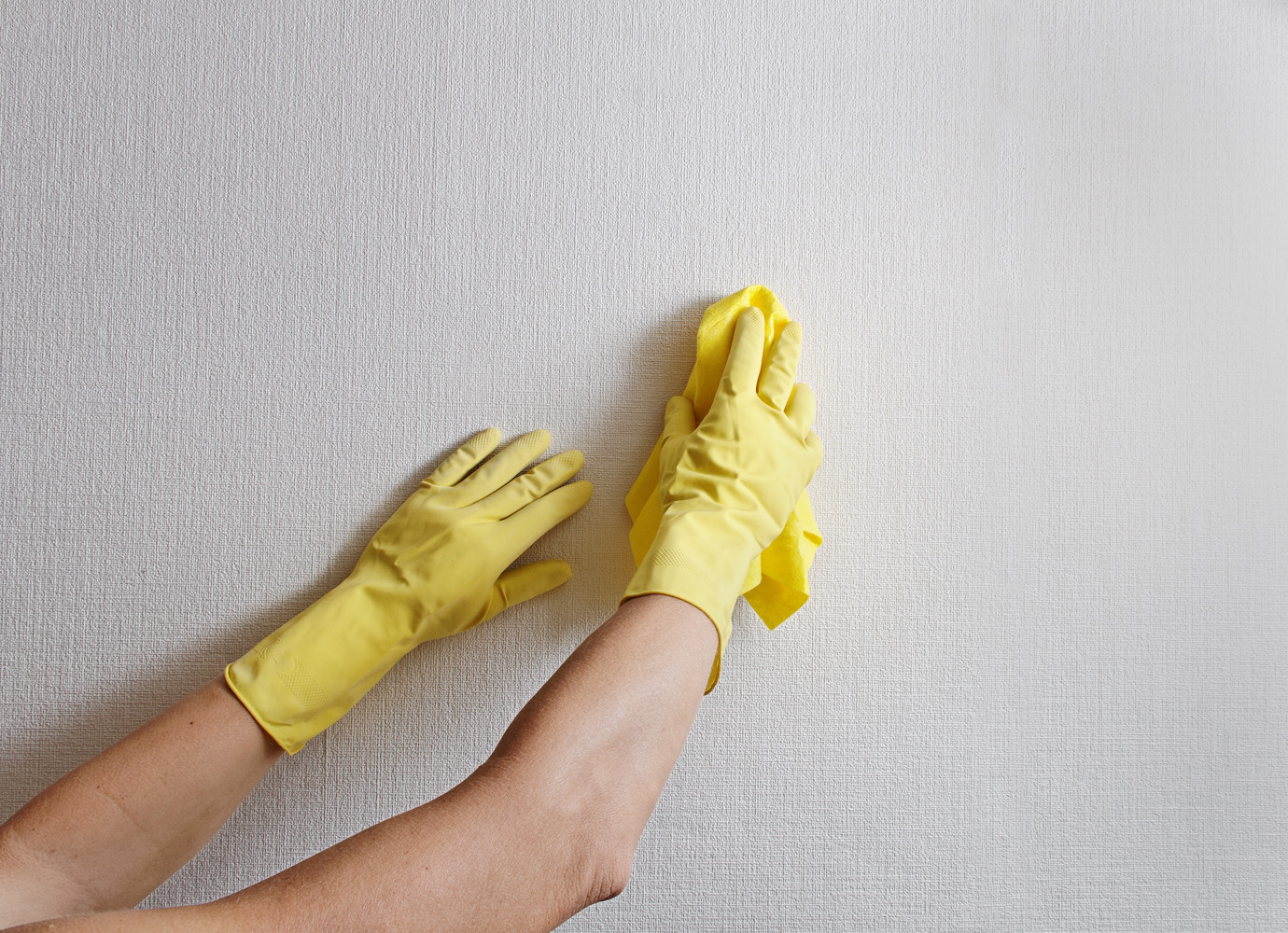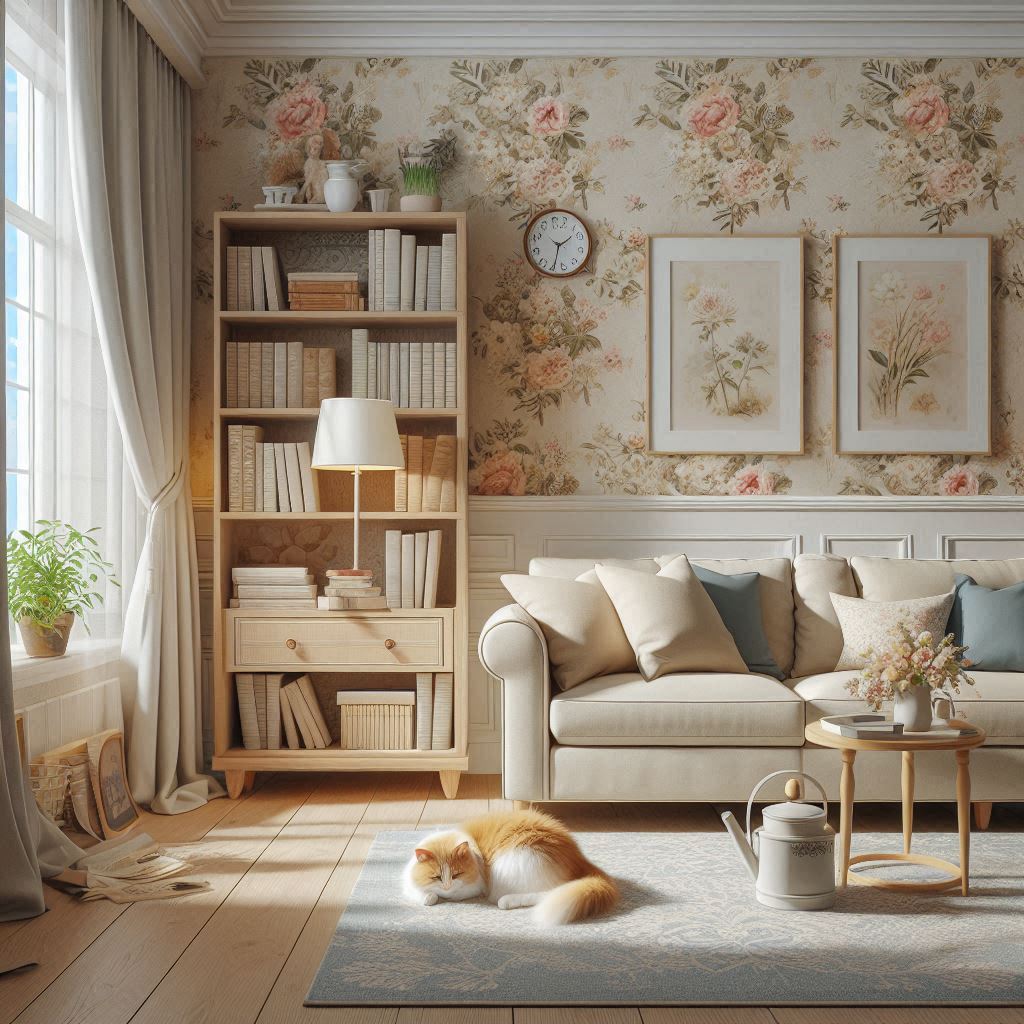Many people think that dusting and vacuuming is enough to make your house look sparkling, but what about dirty walls? Walls get scratched with chairs, vacuum cleaner tubes, or other objects. At the time of the scratch, you may not pay attention to how bad the wall could look, and very often, you don’t even try to avoid any damage. Walls also get extremely dirty where the light switches are.
It’s easy to overlook the gradual darkening around light switches, assuming it’s a natural part of the wall’s ageing. However, this is a sign of accumulated dirt. While repainting the walls might seem like the only solution, it can be a costly endeavour. Instead, consider the cost-effective and hassle-free cleaning option with the right product.
Before you start the wall cleaning, ensure you have prepared your walls by removing dust with a dry cloth. Almost all walls are washable, but if you have one of those paints applied to your walls which is not washable, you should speak to a professional cleaner about the options. Most of the wallpapers could also be washed with warm water and a multi-purpose cleaner, or if you prefer natural cleaning, you can use vinegar instead. If you doubt whether your walls will be damaged after the cleaning, you can try on a tiny area hidden by furniture and proceed only if it passes the test.
Remember to rinse the soap with clean, cold water after treating the wall area; if it dries, it may look even worse. To be on the safe side, move your furniture to avoid damaging it with the cleaning solution and cover the floor with a sheet. Some cleaning products leave stains on different surfaces that cannot be cleaned easily.
Whether it is time for a spring cleaning or just your walls need to be refreshed, you should read online wall cleaning articles written by professionals to avoid any damage.

General Tips For Cleaning Your Home Walls
Cleaning down the walls and the wallpaper has something of a 1950s housewife touch about it – the sort of thing only fanatical cleaners do. However, it’s a lot easier to wash a wall down than to change the wallpaper. And it’s certainly cheaper. You might not want to clean the wall every day or even every week. Still, it’s certainly something that ought to be done – maybe in the annual spring cleaning bash (or else save it until you are flush enough with cash to hire a professional cleaner to do the dirty work you’ve been avoiding).
Thankfully, wallpaper these days is easier to clean and has a finish that stops it from falling to pieces if the slightest bit of damp gets onto it, as old wallpapers did. If you have an older wallpaper of this kind that’s looking grubby, don’t bother cleaning it. Just replace it, or else live with the grub (shudder). And painted walls are even easier to clean.
Tips for cleaning walls:
- Remove cobwebs by wrapping a clean duster around a broom and sweeping this around where the cobwebs are (probably up in a high corner). You can do the same to cobwebs on the ceiling. Once the cloth gets all covered in bits of web, dead spiders and flies’ legs, remove it from the broom and replace it with a clean one. Don’t just use the broom – the dust inevitably trapped in the bristles will get all over the wall and make things worse. Cobwebs within easy reach can be removed with a duster (the cloth sort, not the feather sort). The presence of cobwebs in your home is good – it shows that your house is free enough from toxins and other nasties that other species want to live in.
- General grime can be wiped off with dilute vinegar and warm water. It’s best to do the whole wall in one sweep (maybe leave this job until the test cricket is playing on the radio to keep your mind occupied because cleaning walls down is very dull, especially if the wallpaper is white). You’ll need a whole bucket of the solution and several rags, which you will change periodically. A soft toothbrush can also help with really stubborn bits. This works with wallpaper and painted walls.
- You can scrub down stone walls with warm, soapy water.
- Vodka or some other strong spirit can remove permanent markers after some wretched toddler has scrawled on the wall. You will need plenty of it and a lot of patience. A felt-tip pen is easier – these are usually water-based, so sponging the mark with plenty of water should clean it off– and a pencil is the easiest of all to remove… use a rubber (eraser for our transatlantic friends). Crayon can be removed by gently rubbing the scribble with toothpaste or baking soda paste. Sponge off any residue with a damp cloth.

How To Clean Wallpaper Marks
We all know that the walls on public streets get rather messy. If it’s not the local graffiti artists/thugs taking spray paint to it, it’s the local dogs spraying it. And all the grime from cars, rain, exhaust, smoke, etc. But it’s not just outdoor walls that end up dirty. Inside walls, especially if you have children, also get pretty grubby. And it’s the inside walls that you want to keep clean.
Child-made messes on walls can take several forms. The most irritating form is deliberate scribbling on walls. Less annoying but just as messy are accidental grubbiness caused by sticky hands and spills. The most alarming type is blood on walls when someone’s banged their head or sliced a finger – and it’s not just kids who do this (this article won’t cover large bloodstains on the walls. If you have one of these, you probably have a more serious problem on your hands. Besides, I don’t want to be an accessory after the fact).
Removing Scribbles
Let’s begin with deliberate scribbles. Some people say that if you have a wall painted in blackboard paint and provide kids with chalk, scribbles on other walls won’t happen. In my experience, kids usually scribble on walls because they know it’s naughty, and it attracts the attention of the forbidden fruit. If they want to draw, there’s usually plenty of paper around, not to mention concrete outdoors to chalk on. Pencil is the easiest substance to remove – use a soft rubber. The felt pen is water soluble, so using a damp sponge and spot-cleaning usually works. Biro is more challenging to get off, but can be done with toothpaste. Yes, toothpaste. Just rub a little bit of toothpaste onto the scribble, then rub gently until the scribble is gone. Then, use a damp cloth to wipe off the toothpaste. Don’t use a rubber designed for biro ink (this scratches the paper). Some people say that banana skins get ink stains off the wallpaper. I remember trying this one when I was about ten (my little brother had scribbled on the wallpaper – honest!), but I can’t remember whether it worked.
Crayon Scribbles are the Hardest to Get Rid of
But the worst deliberate scribble to get rid of is a crayon scribble. They’re big, and they aren’t very soluble in anything. My mother’s solution (my brothers’ handiwork again) was to hide the offending scribble behind the furniture. Not a good long-term solution. To get crayons off wallpaper, you will need to use dry cleaning fluid to wipe gently over the stain, working from the outside towards the middle, then brushing with a soft brush (e.g. an old toothbrush). Blot off any excess with a clean cloth.
Removing Food Marks
Accidental marks are usually of the food variety. To clean these off wallpaper, use a dilution of sugar soap and wash it down gently with a sponge. This task is as tricky as carpet cleaning after a food or drink splash. Blot any excess water with a dry cloth, towel, or sponge. Another time-honoured method of cleaning general grime off wallpaper is to rub it with a slice (or several slices) of fresh brown bread. This advice comes up repeatedly, although I can’t vouch for this one – bread tends to get eaten pretty quickly in my household, so having spare slices of fresh bread for cleaning is tricky.
Marks with fatty deposits will need detergent to remove the fats from the paper. Just use neat detergent rather than water. Rinse off the detergent with a bit of water on a damp cloth.
Use That Vacuum Cleaner
Wallpaper can be given a good general clean-over with a broom or a vacuum cleaner. Wrap a cloth around the business end of the vacuum or broom to protect the wallpaper from scratches. This regular cleaning is particularly needed with textured wallpapers—all those ridges and raised bits gather dust otherwise. This method also eliminates odd cobwebs and could be applied as part of your regular domestic cleaning.
Mould can be removed from wallpaper with a dab of vinegar.
How To Remove Odours From Walls
Walls tend to absorb smells. The process is so gradual that regular occupants will not notice it, but visitors will. Getting a friendly outsider to tell you if your walls smell is always worthwhile. This is a common problem in offices because of the large number of people and the limited ventilation, which allows cigarettes and other odours to linger in the air and get absorbed by the paint on the walls.
Remember that the smell a wall absorbs has nothing to do with its cleanliness. These are two separate issues. Before working on the odour, clean the walls with a brush or cloth. Proceed with the following steps only after the wall is dirt-free on the surface.
- Spread a plastic sheet to protect the floor or carpet where you are working from damage from spills or dripping.
- Fill a bucket with warm water and add enough liquid cleaner to create a few bubbles when the mixture is agitated. If excess cleaner or detergent is mixed into the water, a soapy residue will be left on the walls.
- Dampen a sponge or a soft cloth and start wiping the wall.
- Start at the top of the wall, using a step ladder if necessary, and work your way down to the floor level, moving from side to side.
- If stubborn stains do not come off, leave them for now and return to them afterwards. Try using a spray-on cleaner.
- Use paper towels or a clean, thick cloth to absorb any excess moisture on the walls.
- Open all the windows and let the walls dry completely.
This should eliminate the odour emanating from the walls. But before declaring the job over, you need to clean the air filters of the ventilation and heating/cooling system to prevent the odours trapped there from re-entering the room and being absorbed by the walls again.
If after you complete the deodorising of the walls, you still find a smell in the room, then it’s time to look at the upholstery, furniture and carpet cleaning done too.
How To Clean Smoke Residue From Your Walls
Office fires are more common than most people realise, especially in London’s high-density business area. Most of these fires are small and quickly put out by the office staff. They are usually caused by one of the many pieces of electrical and electronic equipment modern offices contain. While the damage is generally limited to the equipment, collateral damage in the form of smoke marks on the walls is very common.
While your office cleaning agency can clean this up, you can usually do it yourself without waiting for their next scheduled visit.
Begin by properly ventilating the area to eliminate soot particles that may still be suspended in the air and the burning smell. Before beginning, wear safety goggles and rubber gloves. This is important since you will be working with paint thinner.
Lay plastic sheeting (or a thick cloth if plastic is not readily available) to prevent drips from staining the floor or carpet during cleaning. Start working from the top of the burn mark—use a step ladder if necessary—and work your way down from side to side. If more than one wall is affected, finish one before proceeding to the next.
Start by using a Chemical Dry Cleaning Sponge to wipe the soot off the wall. These sponges are readily available; a hardware store will have them and can direct you to where you can buy one. Do not wet the sponge —it is designed to work when dry. Wipe the soot away with the sponge. Once the sponge gets saturated with soot, rinse it out, allow it to dry completely, and continue using it until all the soot is off the walls.
Once the sponge has removed as much as it can, wet a regular sponge or soft cloth with paint thinner or pure alcohol and gently rub the stain until it is gone. Do not use water-based home cleaners for this; they will only spread the stain and make removing it even more difficult. Be careful when rubbing; the more you rub, the more paint or polish will be removed from the wall. This is inevitable, but the less the paint is affected, the less painting you will have to do. Once the stain is gone, dry the area with paper towels or a dry cloth.

